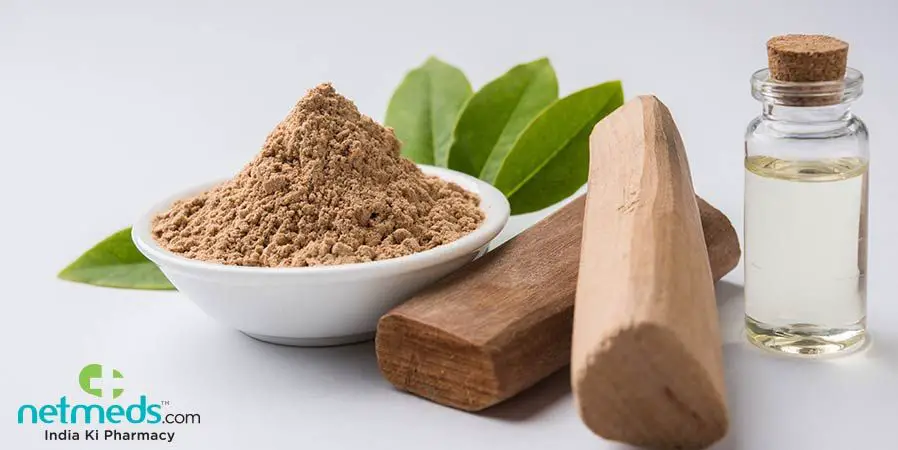Is Sandalwood Oil Safe For Humans?
Sandalwood oil is extracted from the wood, roots, and trunk of sandalwood trees, which are part of the Santalum genus. There are several species of sandalwood used to produce the essential oil, most commonly Santalum album or Indian sandalwood. Sandalwood oil has been prized for centuries in traditional medicine and aromatherapy for its woody, rich scent and purported therapeutic benefits.
Today, sandalwood oil remains very popular and widely used in skincare, cosmetics, perfumes, soaps, incense, and as a natural remedy. With increased interest in complementary medicine, sandalwood oil is gaining attention for its anti-inflammatory, antiseptic, antispasmodic, and antioxidant properties that may help soothe skin, fight infection, relax muscles, and more.
However, like any herbal product or essential oil, questions remain about the safety of sandalwood oil. This article will explore the potential health benefits of sandalwood oil, along with factors to consider regarding the safe and responsible use for humans.
Source and Composition
Sandalwood oil is extracted from the heartwood of sandalwood trees, primarily from the species Santalum album, or Indian sandalwood. Sandalwood trees are medium-sized hemiparasitic evergreens native to India and Southeast Asia. The oil is steam distilled from the wood and requires trees over 30 years old for maximum yield.
The main chemical components of sandalwood oil are sesquiterpenic alcohols. According to ISO 3518:2002 standard, sandalwood oil should contain 41–54% α-santalol and 16–24% β-santalol (Kucharska et al. 2021). There are also other minor terpenes, terpenoids, and ketones present. The composition can vary based on the species, origin, age of the tree, and extraction method.
There are several varieties of sandalwood oil besides Santalum album, including Santalum spicatum (Australian sandalwood) and Santalum paniculatum (Hawaiian sandalwood). These have slightly different chemical profiles and odor characteristics.
Potential Benefits
Sandalwood oil has been associated with various potential health benefits, though more research is still needed in some areas.
One of the most researched benefits is for skin health. A 2012 study found sandalwood oil reduced the severity of acne lesions. The anti-inflammatory and antimicrobial properties may help treat skin conditions like acne. Sandalwood oil is also sometimes used topically to even skin tone and complexion.

There is also some evidence that inhaling sandalwood oil can provide anxiety-reducing effects. A small 2017 study had participants inhale sandalwood oil before a stressful situation, and found it helped lower blood pressure and heart rate. However, larger studies are still needed.
Some proponents claim sandalwood oil can stimulate memory and focus when inhaled. However, there is limited scientific evidence for this benefit so far. Most claims around aromatherapy benefits like this still require more rigorous research.
Overall, while preliminary research shows promise for some uses, high-quality evidence is still lacking for many purported benefits of sandalwood oil.
Safety Considerations
Sandalwood oil is generally considered safe for topical and aromatic use when properly diluted. However, there are some potential side effects and risks to be aware of:
Topical use of sandalwood oil can occasionally cause skin irritation, rashes, or allergic reactions in some individuals. It’s best to dilute sandalwood oil with a carrier oil and perform a patch test before wider application (Source: https://pubmed.ncbi.nlm.nih.gov/17980948/).
Ingesting sandalwood oil is not recommended, as the safety of internal use has not been established. Animal studies using very high oral doses have reported potential liver toxicity (Source: https://pubmed.ncbi.nlm.nih.gov/17980948/).
Inhaling sandalwood oil is generally safe, but may cause headaches, nausea, or drowsiness in some individuals if used for extended periods. It’s best to diffuse sandalwood oil in well-ventilated areas and take breaks from continual exposure (Source: https://www.essentialingredients.com/msds/Sandalwood%20Oil%20Natural.pdf).
People with sensitive skin or known allergies should perform patch tests before using sandalwood oil, as allergic reactions are possible. Children and pregnant/nursing women should avoid using sandalwood oil without medical approval due to insufficient safety data (Source: https://www.ncbi.nlm.nih.gov/pmc/articles/PMC8292048/).
Topical Use
When applied topically, sandalwood oil should always be diluted with a carrier oil like coconut or jojoba oil before use. Using undiluted sandalwood oil directly on the skin can potentially cause irritation for some people. Most experts recommend diluting sandalwood oil at a 1-2% ratio. This means 1-2 drops of sandalwood oil per teaspoon of carrier oil. It’s also wise to do a patch test before wider application by applying a small amount of diluted oil to the inside of the arm and watching for any adverse reactions over 24 hours.
While generally considered safe for topical use when properly diluted, sandalwood oil can potentially interact with certain medications. People taking blood pressure medications, anticoagulants, or sedative medications should consult their doctor before using sandalwood oil, as it may enhance the effects of these drugs. Sandalwood oil should also be avoided by people taking oral diabetes medications or insulin, as it may lower blood sugar levels. Overall, dilute sandalwood oil should be safe for topical use for most people when used as directed, but potential medication interactions should be considered.
Ingestion
Ingestion of sandalwood oil is not recommended for internal use. There are toxicity concerns if sandalwood oil is swallowed, as the compounds can have sedative effects in large doses. According to Drugs.com, “Sandalwood oil is LIKELY UNSAFE when taken by mouth. It contains chemicals that might have effects in the body like those of estrogen. It can also cause the blood pressure to become too low.”
The Memorial Sloan Kettering Cancer Center also advises to “Avoid ingesting sandalwood oil. Cases of toxicity have been reported following oral use.”
While sandalwood oil ingestion does pose risks, there are some exceptions where it may be used internally under strict medical supervision. The University of Michigan notes that sandalwood oil “has been used by mouth for bronchitis, gonorrhea, and inflammation of the urinary tract in a dose of 5-10 drops, three times daily.” However, this is only suggested under the direction and monitoring of a physician. For general aromatherapy use, experts overwhelmingly recommend avoiding internal ingestion of sandalwood oil due to safety concerns.
Inhalation
Sandalwood oil is safe to inhale through aromatherapy methods. However, it’s important to remember that sandalwood oil is highly concentrated and can cause irritation if inhaled directly. Diffusing sandalwood oil in an aromatherapy diffuser is recommended as the diffusion process dilutes and disperses the oil in the air. When diffusing sandalwood, it’s important to follow diffuser safety guidelines like keeping it properly ventilated and away from pets and children. Some experts also recommend limiting diffusion sessions to 30 minutes or less. Sandalwood oil should be avoided by individuals with respiratory issues like asthma as inhaling essential oils can sometimes exacerbate those conditions.
Overall, sandalwood oil is considered safe for inhalation through proper aromatherapy practices. Maintaining ventilation and proper usage guidelines is key. Those with respiratory issues should exercise caution or avoid inhaling sandalwood oil.
Allergic Reactions
Some people may experience allergic reactions like skin rashes or irritation when using sandalwood oil topically. This is more likely to occur if the oil is used undiluted. According to Healthline, common essential oils that frequently cause allergic reactions include sandalwood, lemongrass, jasmine, clove, lavender, and peppermint.
Allergic reactions to sandalwood oil may include redness, itching, swelling, and hives on the skin. In rare cases, a severe allergic reaction known as anaphylaxis can occur. This is a medical emergency requiring immediate care. Symptoms of anaphylaxis include difficulty breathing, tightness in the throat, swelling of the face, lips or tongue, rapid heartbeat, dizziness, and fainting.
If you experience any concerning symptoms after using sandalwood oil, seek medical attention right away, especially if there is swelling of the throat or difficulty breathing. To treat mild skin irritation, wash the area with soap and water and avoid further use of the oil. You may also apply hydrocortisone cream or take an oral antihistamine for relief. Those with known sandalwood allergies should avoid topical use.
Quality Matters
When using sandalwood essential oil, it is critical to ensure you are using 100% pure, high quality oil. Many lower quality sandalwood oils are diluted or blended with other, cheaper oils. According to Aura Cacia, true Australian sandalwood oil is very expensive to produce, so cheaper products are often cut with synthetic fragrances and fillers.
Contaminated or adulterated sandalwood oil can cause skin irritation, allergic reactions, and other safety issues. The highest quality oil comes from sustainably harvested, aged sandalwood trees and undergoes careful steam distillation. Look for 100% pure sandalwood essential oil from reputable brands to ensure you are getting a therapeutic grade product without any synthetic additives.
The Bottom Line
Sandalwood oil appears to be relatively safe for most people when used topically or through inhalation. Some key takeaways include:
- Sandalwood oil has been traditionally used for centuries for its purported medicinal benefits and pleasant woody aroma.
- When applied to the skin, it should always be diluted with a carrier oil to avoid irritation.
- Inhaling sandalwood oil or using it in aromatherapy may offer benefits like improved mood, relaxation, and sleep.
- Ingesting sandalwood oil is not recommended as it contains compounds like farnesol that can be toxic in high doses.
- Quality and purity are important when choosing sandalwood oil to avoid adulterated products.
Use caution and test patch if new to using sandalwood oil. Discontinue use if any irritation develops. As with any supplement, check with your doctor first if you have any medical conditions or are taking any medications, as sandalwood may interact with certain drugs.
Overall, when properly diluted and used externally, high quality sandalwood oil appears to be relatively safe. But ingestion should be avoided, and any concerns should be discussed with a medical professional.



